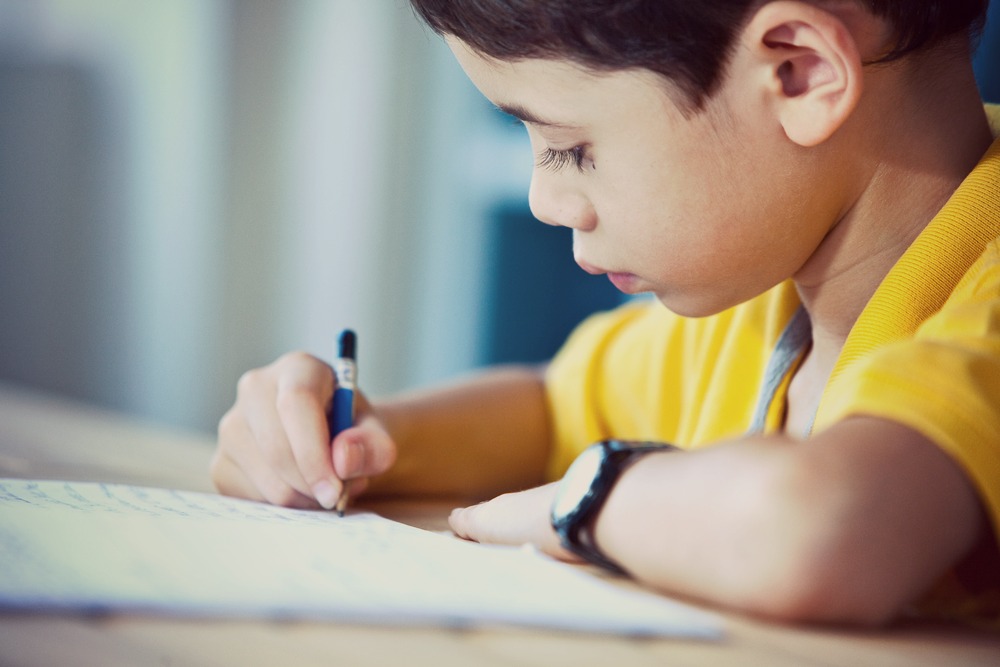Digital technologies have helped children to develop writing skills in multiple ways. According to the results of a survey from Pew Research Center, 96% of the surveyed teachers agreed that digital technologies allowed students to share their work with a wider audience. In addition, the majority of teachers (76%) agreed that digital tools promoted greater collaboration among students.
However, there is a problem: the use of technology has minimized the need for handwriting. Teachers require typed assignments, so the students are being encouraged to use the computer when completing projects. They are using their tablets and smartphones to take notes during class, so handwriting is brought to a minimum.
Research Proves It: Handwriting Comes with Great Benefits
Psychological scientists from Princeton and the University of California, Los Angeles, tested and analyzed the students’ learning abilities linked to typing or handwriting notes. During the first stage of the study, the participants of were relying on their usual note-taking strategy during the lectures (all of them were listening to the same lectures). Half an hour after the lectures, the students were tested on the material.
The findings were quite interesting: both laptop users and hand-writers memorized the same number of facts from the lectures. The users of laptops showed an ability to take more detailed notes. However, they were also inclined to transcribe the words they listened to, without involving their reasoning in the process. The students were tested again after one week. This time, the students who took notes by hand showed significantly better results. The results of this study are clear: taking notes with a pen and paper is a superior method to typing when it comes to boosting memory.
Another study, performed at the University of Indiana, focussed on discovering the effects of handwriting on young children who didn’t know how to read and write. Each child was given an index card with a shape or letter. They were asked to draw it by hand, type it on a computer, or trace it on a dotted line. The results showed that the children who drew the shapes or letters by hand had greater activity in specific areas of the brain that are activated when adults write and read. These brain functions were not active in the children who used the two other methods to replicate the shape or letter.
Why Should Children Write More?
- The quality of handwriting is related to children’s ability to learn and write.
- Handwriting gives students enough time to think and focus while writing. The typing process, on the other hand, is more mechanical.
- The simplicity of the pen-and-paper method keeps the student focused on the task at hand.
- Through handwriting, students express their personality.
How to Inspire Children to Write Longhand
It’s not too hard to inspire primary-school students to write by hand. The process of writing something on paper is quite attractive to them.
From high school on, however, students start relying on technologies more and more. They bring their tablets and laptops to class, and the teachers have no other choice but to let them use technology for learning. Many students from this age group find handwriting boring and tiring. At that point, we have to find ways to engage them in the process.
Here are some ideas to help you encourage children to write:
- Give them reasons to write – a letter, a shopping list, a wish list. If there are a group of children, ask each one to write an anonymous letter. Then, hand out the letters in a random order, and see if they can recognize the the handwriting.
- Create a positive writing atmosphere. Play an educational video and compare the notes that everyone took.
- Ask them to describe events or landscapes through writing. Then, check their work and give them credit.
- Make a project, such as a journal. If they use different colors and pencils, the final result will be not only educational, but creative, too.
- Ask them to write poems, stories, essays, and other creative assignments by hand. The main idea is to make them focus through the process of writing.
Emily Waldman, a grammar tutor from Essays On Time explains:
‘Handwriting supports the brain’s creative functions, which are extremely important for creative writing. For a change, ask your students for a handwritten essay instead of a typed one. Turn it into a fun activity that allows them to show how creative they can get when the time is limited. Don’t set any expectations; there won’t be grades for this assignment. You just want them to practice.’
- If they have assignments or exams to study for, invite them to create mind maps by hand. Handwriting will encourage them to consider their ideas more deeply. They can use color pencils to make the maps more appealing.
- Assign writing projects. Think of a topic and ask someone to write an introductory sentence. Another person then writes the next sentence, making sure to keep a logical flow. Continue until you get an entire paper, and then read it.
- Encourage them to take notes during lectures or lessons. Emphasize the important parts and tell them to write them down in their own words. You can teach children the Cornell Note Taking System for that purpose.
Handwriting has an important connection with creativity and memory which is why it’s such an important part of their development. Anything that will encourage them towards handwriting will help to strengthen their creativity and memory, which will in turn nurture them towards success.
About the Author: Sophia Anderson
 Sophia Anderson is an associate educator, tutor and freelance writer. She is passionate about covering topics on learning, writing, careers, self-improvement, motivation and others. She believes in the driving force of positive attitude and constant development. Talk to her on Facebook or LinkedIn.
Sophia Anderson is an associate educator, tutor and freelance writer. She is passionate about covering topics on learning, writing, careers, self-improvement, motivation and others. She believes in the driving force of positive attitude and constant development. Talk to her on Facebook or LinkedIn.



Thanks a lot for provide te help
This is really very good
This article makes me want to cry because my son struggles with dysgraphia and we have recently decided at age 9 that his handwriting skills are holding him back from other types of learning. Trying to help someone with an invisible disability is not easy. Most of the help is for kids who are obviously not neurotypical. High functioning kids with challenges are a real struggle.
Thanks for your information. I’m sure it is helpful for many people.
Christa handwriting is just one way to develop these skills – there are plenty more. I understand how difficult it is to help kids who are quietly struggling. Keep searching and fighting for him to receive the support he needs. There will be a way through this.